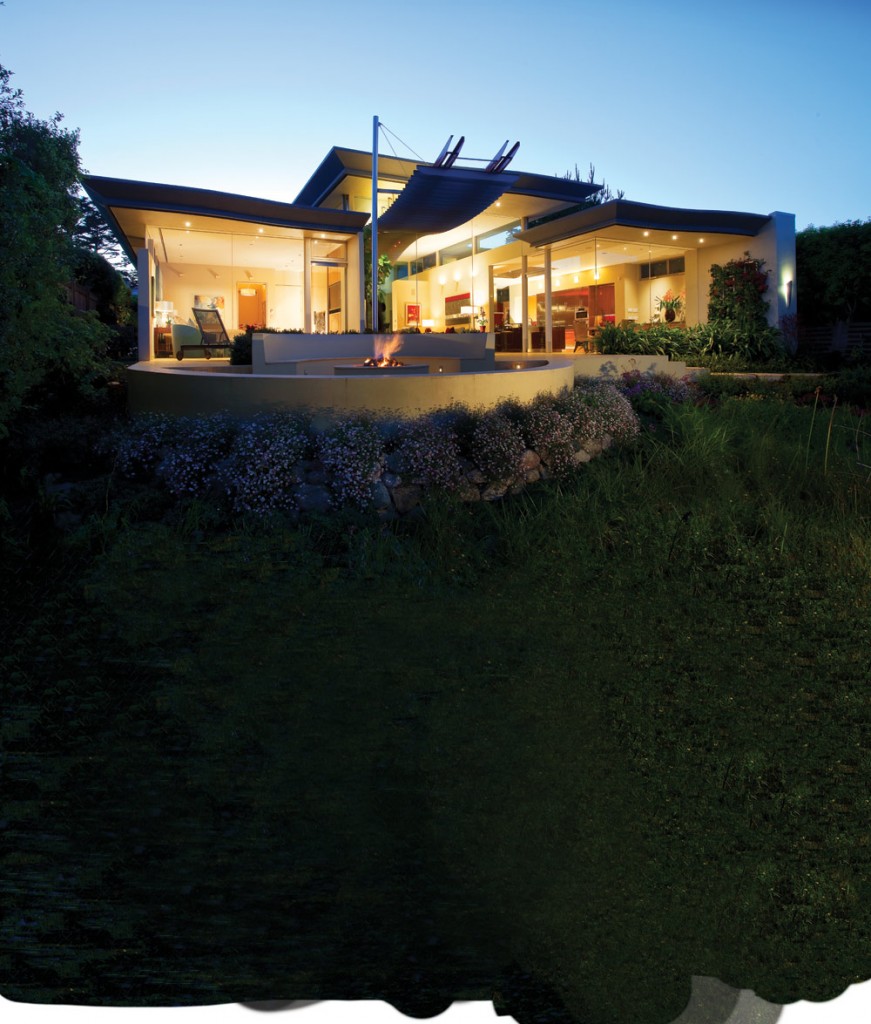The right outdoor lighting will make any home and landscape architecture shine
Exterior lighting is as much about function as it is about form. Like any light, its main job is to illuminate and to provide clarity and definition to a space, but it’s as much a part of the overall home experience as any interior lighting.
So says Simon Berry, director of Singapore based Illuminate Lighting Design. “Often a client will become so involved with the interior lighting element that the exterior lighting gets overshadowed,” he says. “Yet the exterior is the journey to the interior, so it is an equally important part of the experience.”
Exterior lighting unquestionably makes a statement, its purpose to accentuate the architectural design and landscape of a home. Without thoughtful and dynamic exterior lighting, a home loses a chance to shine when the sun goes down. “What we are really talking about is kerb appeal after dark,” said Randall Whitehead of San Francisco based Randall Whitehead Lighting Solutions. “No matter how well a home is maintained or how beautifully it’s landscaped, if it is not illuminated at all or illuminated poorly, all the homeowner’s hard work is lost after dark.”
So what makes good exterior lighting? It’s about positioning, for one. “You have to think of the landscape as a stage,” says Berry. Take a home with water views, for example. “If you are lucky enough to have a direct view of the sea, then this is clearly the focal point and the light should lead the eye to this finale,” he says. “If you keep the light low to the ground, and uplight trees, that will frame the view.” Avoiding direct light is another key. “You should only be able to see the lit effect, not the source that is creating it,” Berry adds.
According to Whitehead, the biggest design trend in landscape lighting is what is being widely dubbed “the moonlighting effect”. This is where lights are mounted on the upper branches of tall trees or underneath the eaves of the main house to create shadow patterns onto the pathways, as if light were passing through the leaves or branches of the tree. “This is a very naturalistic way of creating exterior lighting,” he says.
Of course, no lighting discussion is complete without tackling energy efficiency. Today, it’s all about three letters: LED. “With a variety of LED colors available, not only can you illuminate the greenery in gardens, you can also do a fine job of illuminating fountains and pools,” says Whitehead. There’s also the cost factor. “The advantage of LEDs over their incandescent counterparts is that they use much less energy,” Whitehead continues. While a standard bulb will last between 2,500 and 3,500 hours, LEDs will last in the range of 25,000 hours.
“Though there will be a higher initial cost for the components, the energy savings can be seen immediately,” he adds. “Homeowners will get their investment back in an average of three to four years,” illuminateld.com, randallwhitehead.com.


